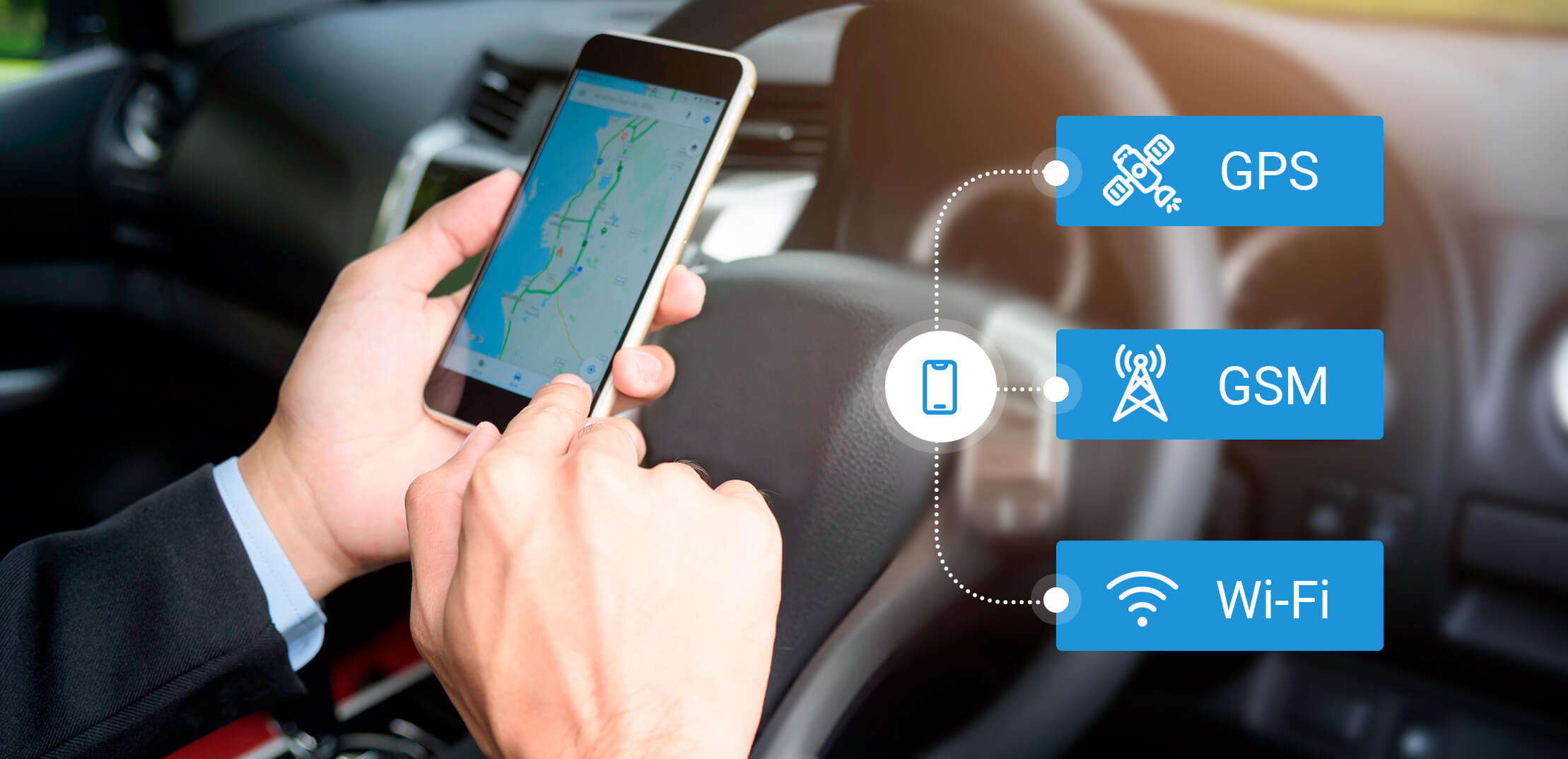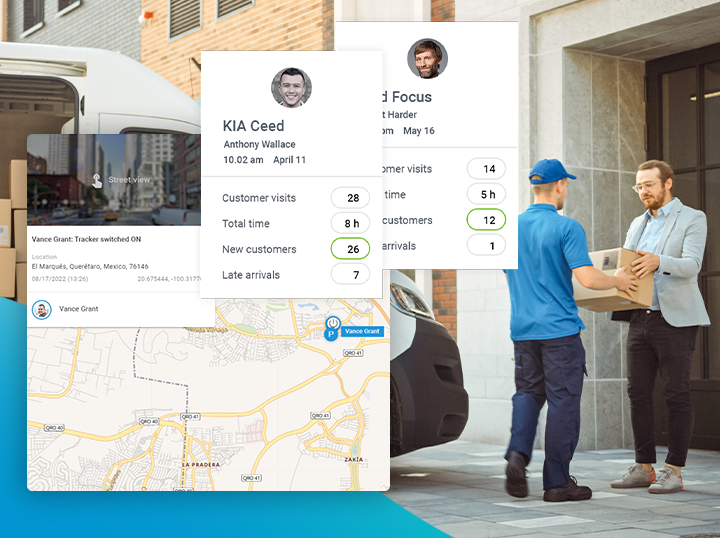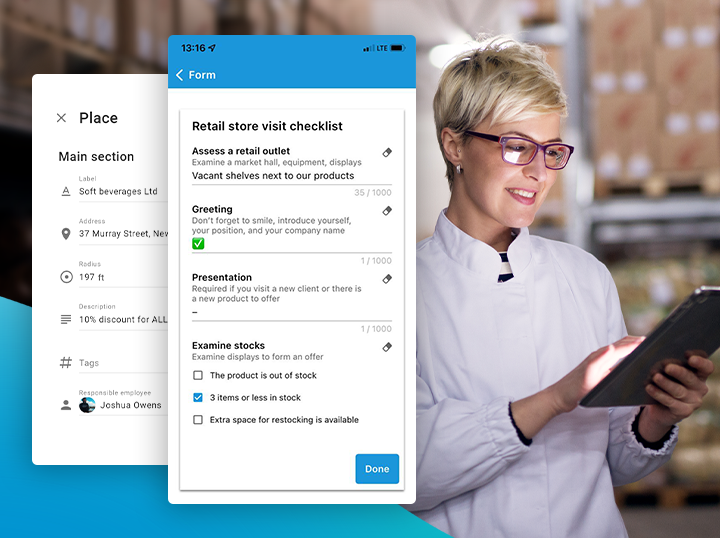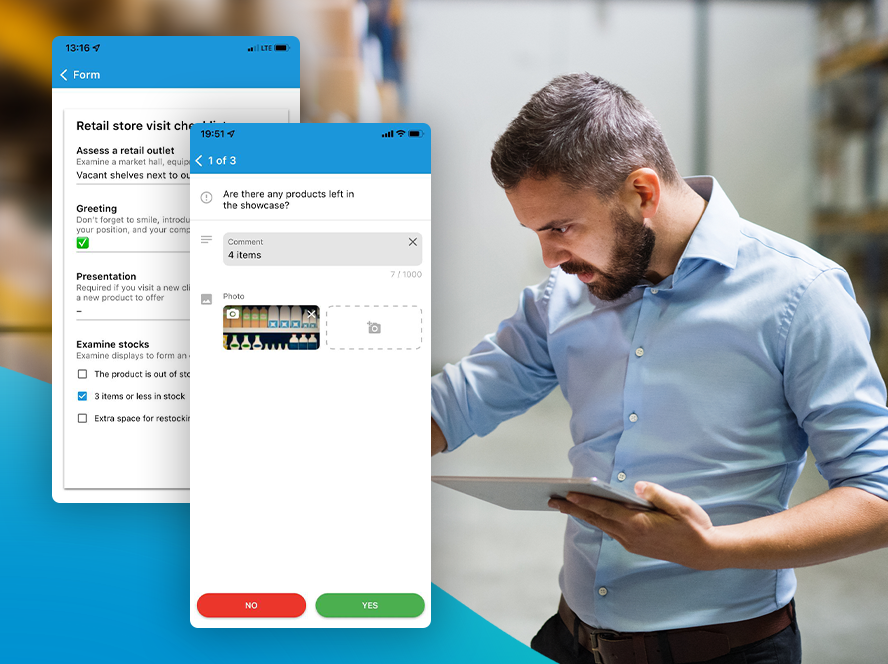While a smartphone enables your field employees to make calls and use a variety of apps, it allows you as a manager to always be aware of where your teams are. More and more companies are turning to mobile devices to track work progress, employee performance and efficiency. Well, and costs. But the most popular mobile feature is the real-time location and employees’ trip history.
Before embarking on a field tracking by mobile devices, let’s consider the most frequently asked questions:
- How does a smartphone (or a tablet) track location?
- What gives the maximum location accuracy?
- Is location service draining the battery life?
You have questions, we have the answers. In this article we will explain all of the three available techniques to monitor your field workforce through mobile devices: via GPS, Cell towers (GSM) and WI-FI/Bluetooth.
1. GPS tracking: superior accuracy
Satellite-based tracking provides maximum accuracy in terms of routing and mileage. These metrics can be used to calculate wear-and-tear, fuel consumption and more. GPS tracking is used to monitor your mobile agents, e.g. sales reps, using corporate or personal vehicles.
How it works: once the phone is on, the GPS receiver will pick up data signals transmitted by satellites to pinpoint the location. At least 4 satellites are required to determine the precise coordinates, while normally it detects as many as 10 satellites at once.
A word of advice: make sure your smartphone uses Assisted-GPS or A-GPS feature. It helps acquire GPS signal faster and can be of great help inside the buildings.
GPS tracking allows dispatchers and managers to monitor field employes in real time. The route appears as a continuous line.
Advantages:
- High accuracy: 16 to 80 ft
- Continuous real-time monitoring
- Precise mileage calculation
- Detailed trip history
Disadvantages:
- Fast battery draining. If you are going to use GPS tracking extensively during the day, keep in mind that it might need recharging (a car charger will do).
2. GSM or Cell tower tracking: not too accurate but reliable
Tracking via cell towers is an old method, which proved to be not very accurate and hence is only used as a backup. It can track the location of objects where GPS is unavailable, e.g. in underground parking lots or subways. In the cities its accuracy may vary up to a few hundred feet.
How it works: a cell phone network operator knows the nearest tower your smartphone is communicating through, as well as its parameters. The software will compare these parameters in the database and will pinpoint the location of the smartphone owner. Location based on a single cell tower will be rather vague, but as the smartphone connects to more towers the accuracy improves.
Similarly to GPS, GSM-based location enables managers to monitor their employees in real time. However the location will be rather rough: broad circle area(s), which in the countryside can extend to a mile. The historic navigation data, when required, will be displayed as circles also, but in sequence.
Advantages:
- Approximate location even when GPS tracking is unavailable: tunnels, underground parking lots, dense concrete structures.
- Minimum hardware requirements, locating and tracking is provided via a GSM module.
- No extra burden on the battery
Disadvantages:
- Accuracy may vary from a few hundred feet in the cities to a mile or few in rural areas.
3. Wi-Fi and Bluetooth: precise and battery-friendly solution for the cities
Most cities are blanketed with Bluetooth and Wi-Fi hotspots. Which makes them very easy to use for tracking your delivery personnel working within the city, when you need to make sure they are on site, rather then how they got there. That will work for sales reps, merchandisers, couriers and maintenance teams.
Wi-Fi and Bluetooth modules embedded in smartphones use less power than GPS and make your smartphone’s battery last longer.
How it works: to enable WiFi and Bluetooth-based tracking, the smartphone has to be within the range of a wireless device, e.g. a router (connection to the WiFi network is not required). Location accuracy will be the same as the bluetooth or WiFi range, in general it is 100 to 300 feet.
Keep in mind: to enable this tracking method make sure that WiFi and Bluetooth are active on your employees’ smartphones.
Wi-Fi and Bluetooth monitoring features real-time employees tracking almost as accurate as “benchmark” satellite tracking. Trip history is displayed as a smooth detailed track, however exact mileage calculation is not available.
Advantages:
- Accurate tracking within 100-300 feet
- Indoor monitoring
- Longer battery life compared to GPS-tracking, which can be a great benefit for your on-foot or bike deliveries (when you can’t use a car charger).
Disadvantages:
- This monitoring technique requires a Wi-Fi signal, available mainly in densely populated areas and business districts
Take smartphone location metrics and turn it into revenue
Location monitoring has a lot of benefits for business – from better driving behavior and work ethics to reduced costs and enhanced productivity. Smartphones and tablets seem most suitable (and effective) for this purpose: you need them anyway, so take the most you can.
State-of-the-art mobile apps for field service management, like X-GPS Tracker, implement all of the three methods: via GPS, GSM and WiFi/Bluetooth. These techniques are smartly combined to yield a perfect accuracy-to-battery-life balance depending on your specific business needs and means of transportation.
A Guide to Tracking through Smartphones
| GPS | Wi-Fi | GSM | |
| Location Accuracy | 15-80 ft | 100-300 ft | 1000 ft – 2 miles |
| Battery Drain | High | Low | Normal |
| Accessibility | Outdoors monitoring (city and rural areas) | Within the city, including indoors monitoring | Mobile coverage area |
| Applicable Business Cases | Monitoring of drivers or sales reps, especially when its is required to track fuel consumption, mileage, fuel level, actual working hours | Monitoring of on-foot staff: sales reps, merchandisers, couriers and field engineers | Ensuring safety of field engineers operating in remote areas |
X-GPS Tracker combines all the three options. It has user friendly interface and smart modes to monitor your field service teams regardless of what they do, how far they go and what vehicles they use to get there.
With the app you can always be updated on your teams location in real time or through trip history, time and duration of customer visits and exact miles driven.






















